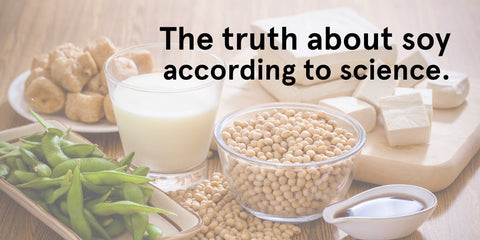The founders of Soylent set off on a mission to develop a product that democratized nutrition. In the early stages, they may not have used the words food justice, food insecurity, or hunger relief, but they knew they had a product that would have a purpose in many lives.
In focusing on providing affordable, accessible, and complete nutrition to all, Soylent’s founders grew attached to terms like food justice. The justice of food: it aligned perfectly with Soylent’s mission.
Today, Soylent explores how the meaning of food justice is intertwined with Soylent’s function, mission, and values. Our power lies both in our product and our platform to educate.
Soylent culture is encouraging discussions relating to sustainability, democracy, justice, and equity. Our products and dialogue with others are what will ultimately create food justice.
What Is Food Justice?
Food justice is a movement that drew from the exercise of environmental justice. The environmental justice movement was led by those disappointed in mainstream environmentalists of the 1980s.
In the 80s, environmentalists were criticized for concerning themselves with scenery and wilderness preservation rather than the health of vulnerable communities of people.
The environmental justice movement leaders found that mainstream environmentalists were elite, white, and misguided on what needed attention most. Pollution was disrupting the health of human communities that heavily depended on the land they occupied.
True justice would consider the environment’s role in everyone’s lives, not just those of the elite.

From Environmental to Food Justice
The people impacted most by environmental problems are equally affected by food injustices. Justice is creating access to healthy food and ending the structural inequities that lead to unequal health outcomes.
Consider the implications of industrialized agriculture. Factory farms’ pollutants and toxins released into the air, water, and agriculture disproportionately impact neighboring communities. A concentration of unhealthy environmental conditions is unjust to the people within the area.
Environmental and food justice go hand in hand and often overlap. The history behind the two movements is deeply rooted in systems created before you or even your grandparents were born.
Today Soylent works to overcome these injustices by challenging the systems that are a disservice to us all. Our products support our values and promote food justice for everyone.
Food Injustices
Food justice will take time and innovation to achieve. Soylent takes the first step by democratizing food. From powders to drinks, we’re making sustainable nutrition accessible to all.
As we work from small to large-scale justice, we continue to grow in our perspective and understanding. A great resource, The GRACE Communications Foundation, details what it is to question actions and systems under the lens of food justice:
“examines access to healthy, nutritious, culturally appropriate food, as well as: ownership and control of land, credit, knowledge, technology and other resources; the constituent labor of food production; what kind of food traditions are valued; how colonialism has affected the food system’s development and more.”
We achieve democratized nutrition when nutritious and healthy foods are accessible to all. Food justice is when the current food system has transformed to account for disparities and inequities.
Food Justice and Racial Justice
In our individual and intertwined worlds, race, class, and other factors impact how we operate. Discrimination, oppression, and inequity, particularly against Black communities, Indigenous peoples, and those of color, must be considered.
We cannot ignore these realities while working to change our food systems. There is no food justice without racial justice.
Systemic Racism
Systemic racism is embedded in American culture. The current laws impact the education, income, healthcare, political representation, and housing that marginalized communities receive.
Let’s take a deep dive into the role one factor, housing, plays in preventing food justice. As previously mentioned, industrialized agriculture is harmful to the environment and the communities that surround factories.
A CAFO, or Concentrated Animal Feeding Operation, is an industrial-sized livestock operation. Given their size, CAFOs produce vast amounts of animal sewage and other pollutants.

(Aerial view of a CAFO farm surrounded by floodwaters in Duplin County. North Carolina, USA.)
Over 168 gases are emitted from CAFO waste, including hazardous chemicals such as ammonia, hydrogen sulfide, and methane. Alongside pollutants, infestations of flies, rats, and other vermin are often found around CAFOs and therefore around CAFO neighbors.
The pollutants from CAFOs pose a tremendous threat to the well-being of the people living nearby. Who lives by these CAFOs?
The communities surrounding CAFOs are disproportionately lower-income neighborhoods of color. One study in North Carolina found that people of color are 1.5 times more likely to live near a hog CAFO than white people.
Unequal access to simple rights like housing, health education, affordable healthy food, and healthcare exemplify how systemic racism prevents food justice for all. Working together to share resources and information that combat these systems is how we achieve justice.
Indigenous Food Justice
Under the lens of food justice, Indigenous communities are looking to reestablish native culture, resources, and technologies disrupted by colonization and displacement.
Indigenous communities’ ways of nourishing themselves have been under threat for centuries. As pioneers of sustainable agricultural systems, Indigenous people have been fighting to maintain their practices since they’ve begun to be under threat.
Food justice would require reworking our systems, reestablishing land ownership, and allowing Indigenous people to return to Indigenous food sovereignty.
Indigenous food sovereignty implies the ability to grow, eat, and share food according to their own traditions and values. This is food justice for Indigenous people.
Food Worker Justice
In bringing justice to our food systems, we must consider the people who work within them. Immigrants from Africa, Asia, South America, and worldwide have become farm and food workers in the U.S.
About 17% of all U.S. jobs are in the food sector. Undocumented immigrant workers carry out many of these jobs. Consequently, food workers are the lowest paid and most under-protected workers in the nation.
Low wages and substandard working conditions allow the food industry to earn enormous profits. These circumstances put the burdens of poverty, labor abuse, and food insecurity on those most vulnerable.

The movement for food justice cannot thrive in a system where food workers are criminalized, exploited, and going hungry.
We must alter systems and processes to allow everyone, including food workers, to retain food security.
Food Security
The U.S. Department of Agriculture (USDA) defines food security as living with no limited access to food. In opposition, food insecurity is a lack of consistent access to enough food for an active, healthy life.
Indicators of food insecurity include worrying that food will run out, being hungry but not eating, the inability to afford a balanced meal, and cutting out or skipping meals.
Hunger and food insecurity often overlap but are classified differently. Hungry people experience the physical sensation of discomfort. People who are experiencing food insecurity lack resources and access to food.
Food insecurity is another battle to be faced in the fight for food justice and impacts every community in the United States. Food insecurity impacts people living below and above the poverty line; it is not an isolated issue.
Food Deserts
Food security is an overarching concept of food access. Along with the cost of living, income levels, and other systemic matters, proximity has been a rising issue in preventing food access.
To have access is to have affordable, healthy food options within convenient traveling distance to your home. The USDA uses the term food desert to describe these geographic areas in which food is inaccessible.
Due to the lack of grocery stores, about 2.3 million people live more than one mile away from a supermarket and do not own a car.
Public transportation is of great help in urban areas, but economic forces have driven grocery stores out of many cities in recent years. In suburban and rural areas, public transportation is either very limited or unavailable.
Along with proximity, food deserts are categorized socio-economically. Frequently, food deserts are in low-income areas. Studies have found several disparities in the access to food between socioeconomic levels.
Wealthy districts have three times as many supermarkets as poor ones do. White neighborhoods contain an average of four times as many supermarkets as predominantly Black ones do. Grocery stores in African-American communities are usually smaller with less selection.
Food deserts limit people’s choices in what they eat. People’s options are restricted to what’s available and affordable. Many food deserts contain fast-food chains, corner delis, convenience stores, and liquor stores in excess.
Food justice would allow those who live in low-income areas to access unprocessed foods and other healthy options. Food justice supports complete nutrition and access to fresh produce consistently.

In understanding the determinants of food insecurity, Soylent has expanded our impact and philanthropic programs by developing #SoylentForGood. The #SoylentForGood program has made financial contributions to causes that work every day on the front lines of fighting food insecurity.
Soylent products have been donated to food banks, pantries, homeless shelters, and disaster relief organizations. Soylent’s products go a long way in fighting hunger, but our dollars can support the work of non-profit experts and leaders who have been working on these issues for decades.
Future Of Food Justice
Food justice demands that we make immense changes to our current systems. We must recognize the mistakes that have been made and work together to grow past them.
Establishing justice is not a simple task and will require time, effort, innovation, and understanding. Ultimately, we will develop a solution for the global food ecosystem of the future.
Today, you can join us in creating a just future by supporting other non-profit organizations and us in our missions.





